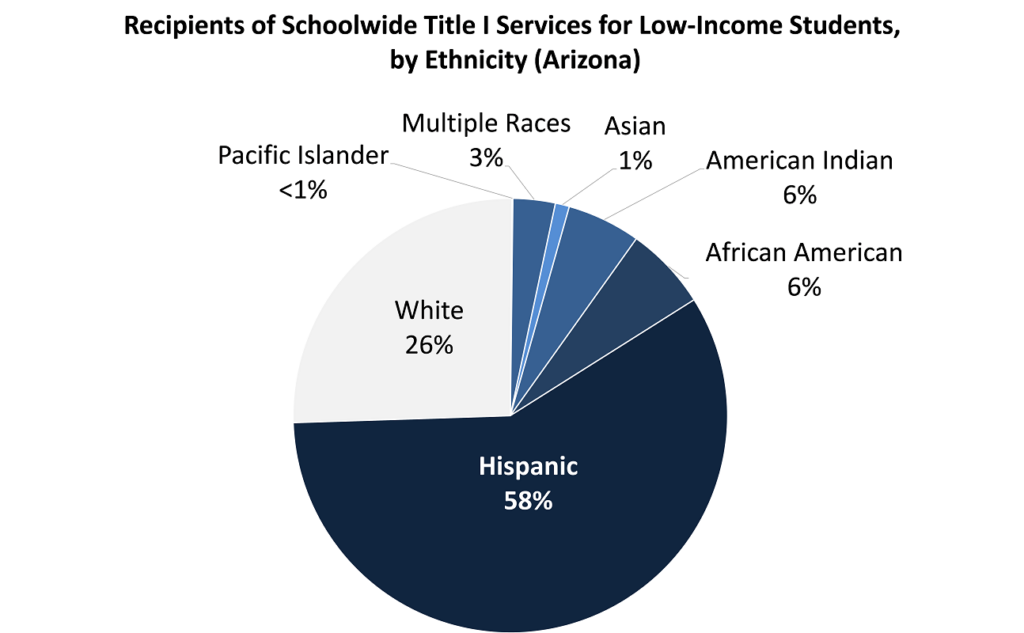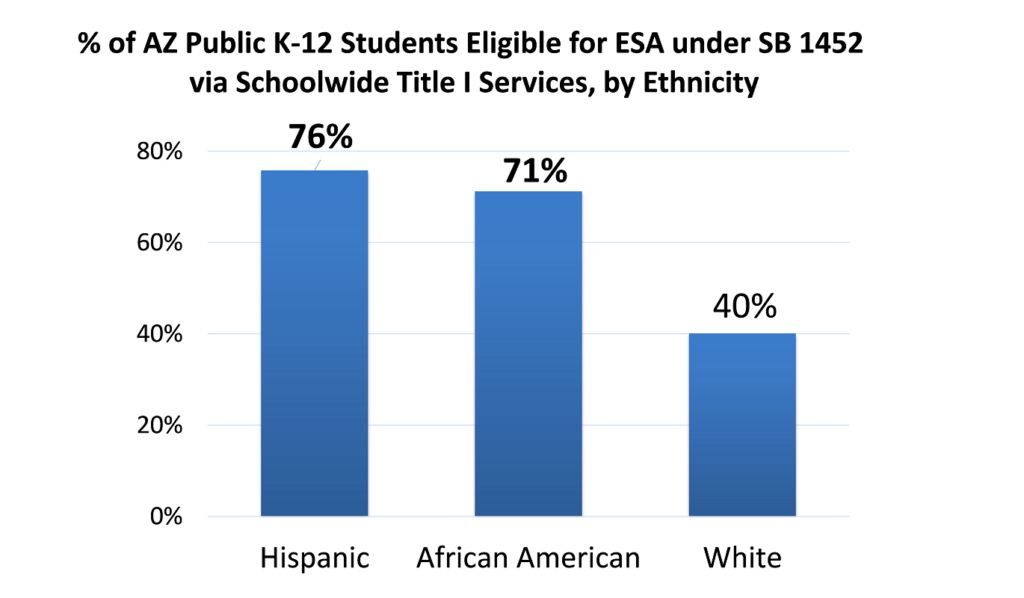All Students in Need Deserve Educational Opportunity with ESAs
March 16, 2021
By Matt Beienburg
Politicians seem to have discovered a winning new message: “Our students have needs…as long as public schools get paid to meet them.”
At least, that appears to be the logic of the education establishment and their media allies opposed to Arizona Senate Bill SB 1452 and the Empowerment Scholarship Account (ESA) program, which helps families pay for homeschooling, microschooling, private schooling, and other education options in the wake of COVID-19. Recently passed by the State Senate, the bill would allow any student who receives free or reduced-price lunch or federal Title I services for low-income students to qualify for an ESA (including incoming kindergarteners who would be eligible to receive these services in the upcoming year).
But apparently, whether or not these students are sufficiently “in need” in the eyes of ESA opponents depends on whether or not they agree to stay put in the very same public school system that refused to serve them in person over the past 12 months.
Let’s look at the evidence. Exhibit A: Democratic Superintendent of Public Instruction Kathy Hoffman recently celebrated the Title I approach for identifying students most in need of educational assistance:
“[W]e’re in the process of allocating an additional billion dollars to our schools, and the majority of that is being allocated out through our Title I formula, which is really good news, because by the federal government using the Title I formula, the dollars are being directed towards our students and school communities that need it the most. It’s using poverty data to determine where those dollars are being directed towards.”
And just how does Title I identify students in need? Primarily, by identifying areas of concentrated poverty and providing funding for all students within them. As stated by the U.S. Department of Education: “Today, 95 percent of children served by Title I receive services in schoolwide programs that serve all children in the school, regardless of whether they are formula eligible or not.”
So the federal government, Arizona’s progressive superintendent of public instruction, and the hundreds of school districts in Arizona all seemingly agree that using the Title I approach ensures dollars go to helping students “that need it most.”
That is, apparently, unless those students are trying to have their needs met someplace other than a public school.
Exhibit B: Media allies of the education establishment are complaining that SB 1452 would dare to use the same Title I approach to identifying students in need: “Bill sponsors contend the voucher expansion will benefit only low-income students from so-called Title I schools, which receive funding for disadvantaged students to close educational gaps. But…students would merely have to attend the school and would not need to be low-income themselves to qualify.”
In other words, while district schools routinely dole out Title I funding for low-income students to serve every kid in their community (without using an arbitrary income cutoff), it would apparently be outrageous to extend support to these same kids via an ESA.
What’s more, the data suggests that the students in question don’t quite fit the “wealthy, white family” trope routinely thrown around by union backed special interest groups. Some 700,000 students in Arizona are served by federal Title I funding for low-income students, each of whom would be eligible for an ESA under SB 1452. Based on the most recently reported, publicly accessible enrollment (2019-2020) and Title I (2019) data from the Arizona Department of Education, three quarters (74%) of the public school students who would be eligible for an ESA via the Title I provision in SB 1452 are students of color, while just a quarter are white. This means the primary eligibility mechanism of SB 1452 would apply to minority students at a rate of nearly 3 to 1 compared to their white peers.

Now, it’s true that nearly 100,000 of these students already qualify for an ESA by residing on a Native American reservation or attending/residing within the boundaries of a D- or F-rated public school. Yet even when these students are excluded, the percentages hardly budge: White students would make up about 28% of the remaining Title I beneficiaries.
Moreover, it’s rather illuminating to see what SB 1452 actually means for communities of color in particular. Looking specifically at the three largest ethnicity categories reported by Arizona Department of Education enrollment data, for example: The Title I provision in SB 1452 would cover ESA access for 40% of white public school students in Arizona, while automatically guaranteeing access to 71% of black and 76% of Hispanic public school students in the state.
Put more concretely, only about 5,000 (8%) of African American students in Arizona have ESA access through D- and F-rated schools currently. SB 1452 would provide ESA access to more than 40,000 African American students (71%) in the state. Likewise, among Hispanics (a much larger share of the Arizona K-12 population), approximately 50,000 students (9%) have ESA access via attendance at a D- or F-rated school. Under SB 1452, that number would rise to roughly 400,000 (76%) of students.

These students may be reducible to funding units in the eyes of some—worthy of extra help only as long as they bring dollars with them to their local public school. To the rest of us, perhaps they deserve the freedom to pursue the very best education possible, regardless of its form.
Matt Beienburg is the Director of Education Policy and the Director of the Van Sittert Center for Constitutional Advocacy at the Goldwater Institute.
Get Connected to Goldwater
Sign up for the latest news, event updates, and more.
Recommended Blogs

Donate Now
Help all Americans live freer, happier lives. Join the Goldwater Institute as we defend and strengthen freedom in all 50 states.
Donate NowSince 1988, the Goldwater Institute has been in the liberty business — defending and promoting freedom, and achieving more than 400 victories in all 50 states. Donate today to help support our mission.

We Protect Your Rights
Our attorneys defend individual rights and protect those who cannot protect themselves.
Need Help? Submit a case.


